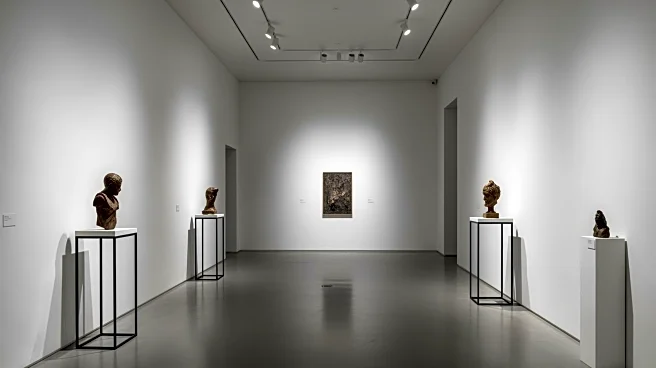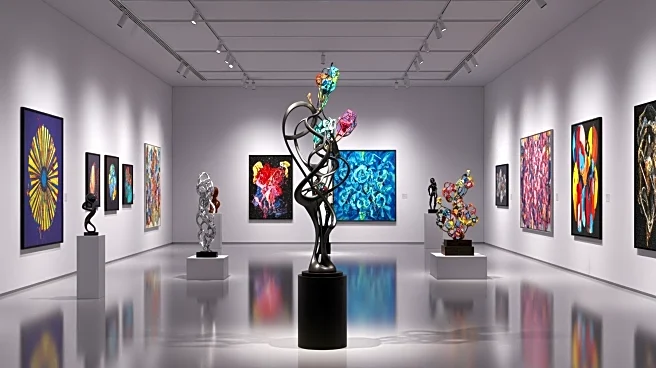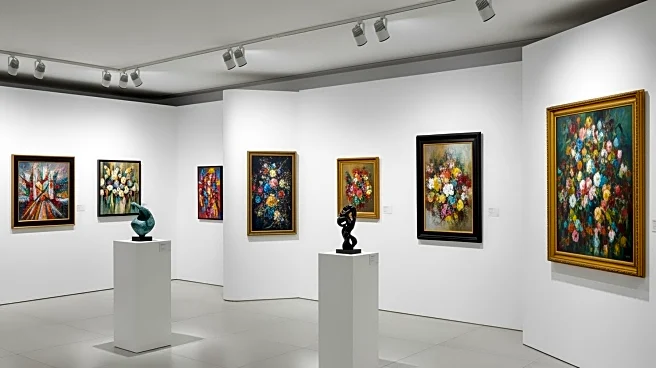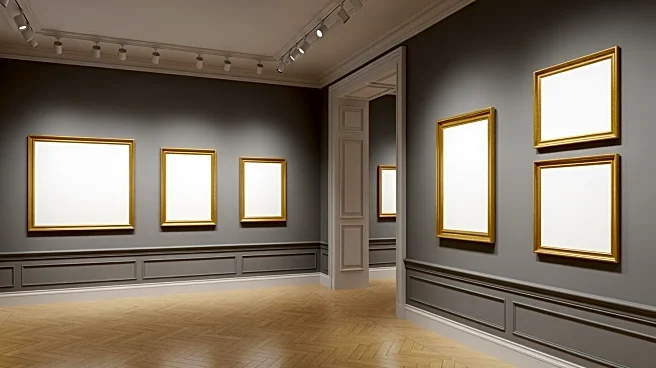What's Happening?
Claudia Altman-Siegel, founder of the Altman Siegel gallery in San Francisco, has announced the closure of her gallery due to financial difficulties. Established in 2009, the gallery was known for showcasing
local and international artists, contributing significantly to the Bay Area's art scene. Despite its success in placing artists in major museum collections and participating in prestigious art fairs, the gallery faced challenges due to a slowing art market and the high costs associated with art fairs. Altman-Siegel, who previously worked at Luhring Augustine gallery in New York, cited the inability to predict future sales and the financial pressure of maintaining gallery operations as key reasons for the closure.
Why It's Important?
The closure of Altman Siegel highlights the financial pressures faced by mid-size galleries in the art industry, particularly in regions like San Francisco. The gallery's shutdown reflects broader challenges in the art market, where smaller galleries struggle to compete with larger, multinational galleries. This development may impact local artists who relied on the gallery for exposure and sales, and it underscores the difficulties of sustaining art businesses in high-cost areas. The closure also raises questions about the sustainability of the art fair model, which imposes significant financial burdens on galleries.
What's Next?
With the gallery set to close by Thanksgiving, Altman-Siegel plans to explore new opportunities outside the traditional gallery model. The closure may prompt other mid-size galleries to reassess their business strategies, potentially leading to shifts in how art is marketed and sold. The art community in San Francisco may need to adapt to the loss of a significant venue for contemporary art, potentially affecting local artists and collectors. The broader art market may see increased scrutiny of the art fair model and its impact on gallery sustainability.
Beyond the Headlines
The closure of Altman Siegel may have cultural implications for San Francisco's art scene, which has historically been resistant to large, commercial galleries. The gallery's success in building community trust and showcasing socially important work highlights the importance of local engagement in the art world. This development may encourage other galleries to prioritize community involvement and innovative programming to sustain operations in challenging economic climates.













